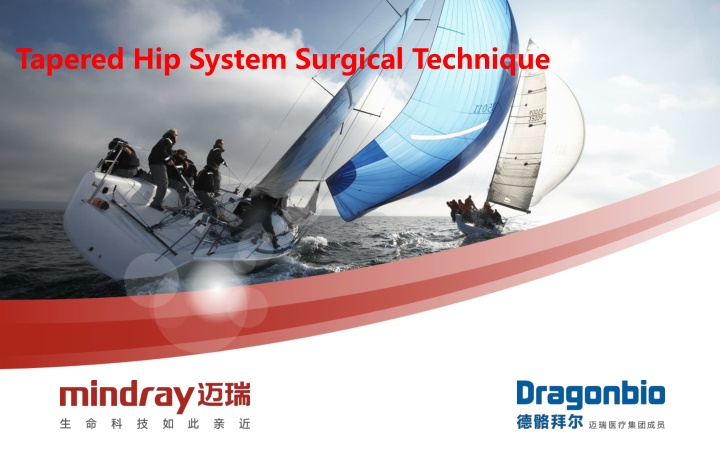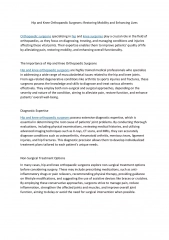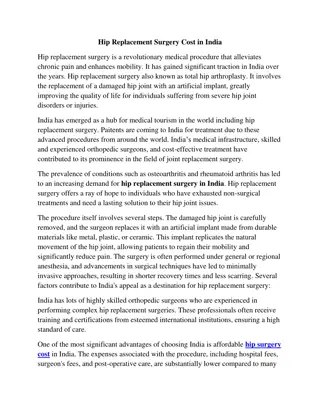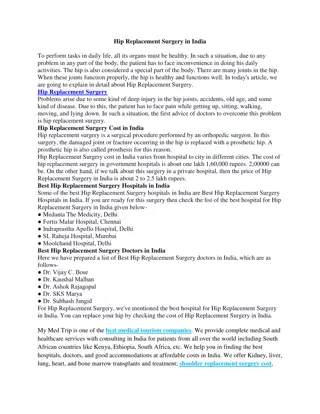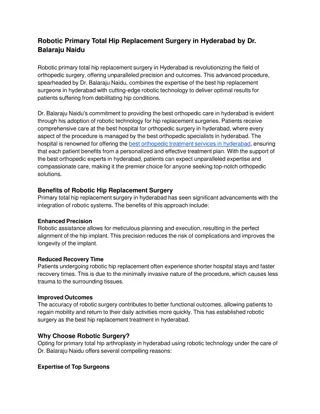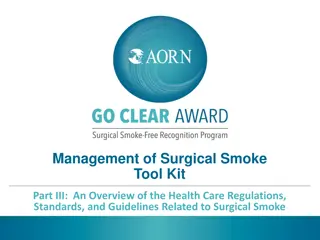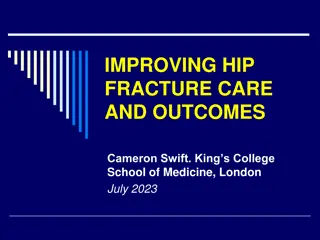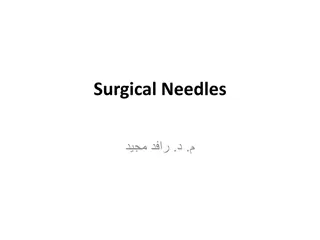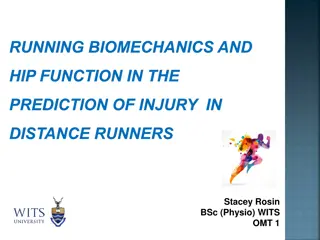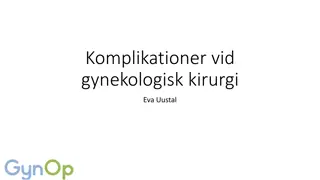Tapered Hip System Surgical Technique Overview
This comprehensive guide provides a detailed overview of the surgical technique involved in the Tapered Hip System. From pre-op planning to instrument usage and procedures like femoral neck cut and acetabular operation, this resource covers essential steps with accompanying images for clarity.
Download Presentation

Please find below an Image/Link to download the presentation.
The content on the website is provided AS IS for your information and personal use only. It may not be sold, licensed, or shared on other websites without obtaining consent from the author.If you encounter any issues during the download, it is possible that the publisher has removed the file from their server.
You are allowed to download the files provided on this website for personal or commercial use, subject to the condition that they are used lawfully. All files are the property of their respective owners.
The content on the website is provided AS IS for your information and personal use only. It may not be sold, licensed, or shared on other websites without obtaining consent from the author.
E N D
Presentation Transcript
Content Instruments show Pre-Op plan Femoral Neck cut Operation of Acetabular Operation of Fumer Reset Insert
Pre-Op Planning Define - Center of Rotation - Cup Size - Offset - Leg Lengt Landmarks - Ischial Tuberosity - Greater / Lesser Trochanter
Pre-Op Planning Aim for Optimal Metaphyseal Fill - Primary Load Transfer Area - Primary In-growth Area Diaphyseal Fill Not Critical - Tapered Distal Geometry
Pre-Op Planning Lateral View Three Point Contact and Fixation is CRITICAL Posterior Neck Anterior Metaphyseal / Diaphyseal Junction Distal Posterior
Neck Resection Guide Reference: - Greater Trochanter - Lesser Trochanter Be Conservative Measure Calcar Level From LT Level--1.5cm up LT
Operation of Acetabular Start grinding the acetabular from the smallest acetabular file or use a 6-8mm acetabular file smaller than the desired prosthesis
Operation of Acetabular Anteverted 15 Valgus 45
Operation of Acetabular Select the same nominal acetabular implant as the acetabular file, pay attention to the implant angle
Match of Acetabular Cup with HA coating and Reamer Domes A 50mm reames a 49mm cavity A 50mm trial shell is 49mm in diameter A 50mm acetabular shell is 51mm in diameter
Operation of Acetabular Blue area is the safe area for the screws, the screws can help the early stability of the prosthesis, you can also choose not insert the screws.
Operation of Acetabular Placement of the liner
Anteversion Osteotome Medium Style Version Definition
Canal Finder Blunt Tip Side Cutting Canal Definition
Lateraliser & Lateralising Rasp Allows Preparation in The Medial Aspect of the Greater Trochanter Important for a Tapered Stem Prevents placing stem in varus Stay Lateral!
Tapered Reamers Reference: GT - Greater Trochanter
Tapered Reamers Reference: C Calcar Medial Aspect of the Neck Resection
Tapered Reamers Size 6 Sharp aggressive Power or hand Thread pulls you into the canal Ream incrementally Ream to cortical chatter Do not over ream Two sizes per reamer
Broach Handle Quick Connect / Release Narrow Attachment Profile Version holes provided for Alignment Rod Curved Strike Plate Broach Icon
Broaching Broach in neutral alignment. Avoid broaching in varus risk of calcar fracture! Assess Rotational Stability Evaluate Neck Resection Level Assess Leg Length / Center of Rotation Intra-op check
Broaching STAY LATERAL!
Neck Trials Size Etchings - Lateral Aspect - Neck Trunion Trial head locking ring
Reset Install the appropriate neck trial and plastic head trial to determine the correct prosthetic position, joint stability, range of activities and length of the lower limbs.
Stem Insertion Insert stem in neutral alignment. Avoid following medial curve stay lateral!. Avoids varus placement risk of calcar fracture! Initial insertion by hand, impact final 1 to 2 cm with impactor
Stem Inserter / Impactor Positive Lock Standard Both Offer Full Version Control
Broach Stem Relationship Line to Line with the grit blasted surface Porocoat Thickness: approx 0.3 mm over the broach envelope proximally
CASE: 38 Year Male (Dysplasia)
